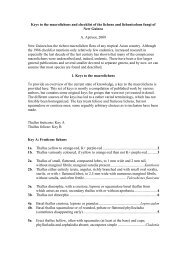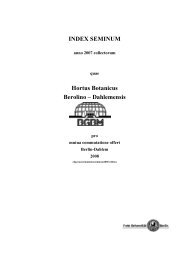DIG35 Specification: Metadata for Digital Images. Version 1.0
DIG35 Specification: Metadata for Digital Images. Version 1.0
DIG35 Specification: Metadata for Digital Images. Version 1.0
You also want an ePaper? Increase the reach of your titles
YUMPU automatically turns print PDFs into web optimized ePapers that Google loves.
Chapter 2:<strong>Metadata</strong> Architecture <strong>DIG35</strong> <strong>Specification</strong> 2000-08-30Figure 2-3: Additional conceptual structure of a digital imageIn addition to the metadata that is closely associated with the file <strong>for</strong>mat image data, there are other metadata that are usedthroughout the lifecycle of the image data. Such metadata may include print condition in<strong>for</strong>mation such as output media size,the number of copies and service order in<strong>for</strong>mation (i.e., delivery instructions), and payment methods. While this in<strong>for</strong>mationmay be very useful in various applications, it is out of scope of this specification.2.3 <strong>Metadata</strong> Interchange Model2.3.1 Image Pixel Data InterchangeThe most important aspect of digital imaging is to be able to view, share, and enjoy the actual image in a variety of ways. Thoseimages are, in most cases, captured directly with a digital camera or created by scanning a film or prints. These digital imagesare stored as an image file on a storage media to be used in various ways to fulfill the objectives of the user. Typical uses, <strong>for</strong>example, are opening an image into an application to be printed <strong>for</strong> personal pleasure or used to create post cards and/or webpages to share them with family members or friends. The fundamental value to the user is the capability of viewing the capturedimage in a variety of ways and at different times.This type of image data interchange and work flow are enabled due to the fact that current devices and applications support animage file <strong>for</strong>mat model which is well defined and standardized. Thus, the actual image data can be interchanged betweenvarious file <strong>for</strong>mats.Figure 2-4 shows a typical model of image data interchange. Filters include image libraries or plug-in type applications thatenable the system to read and store the image data into its native (proprietary) data <strong>for</strong>mat. As long as both systems support thefile <strong>for</strong>mat model, the image data can be successfully interchanged.<strong>Version</strong> <strong>1.0</strong> © 2000 <strong>Digital</strong> Imaging Group, Inc. 5




